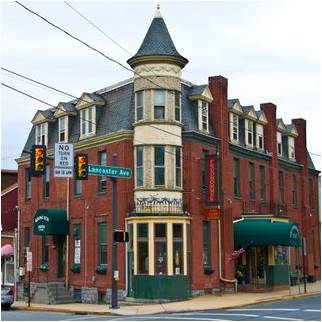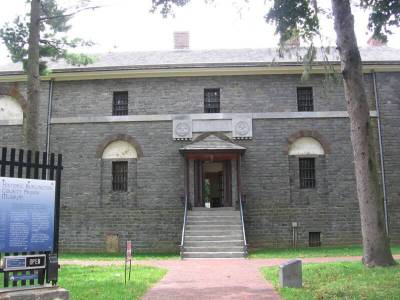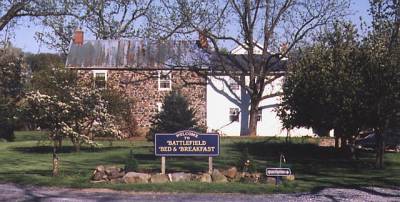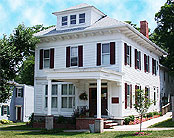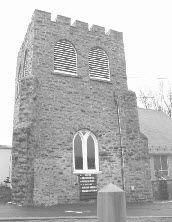
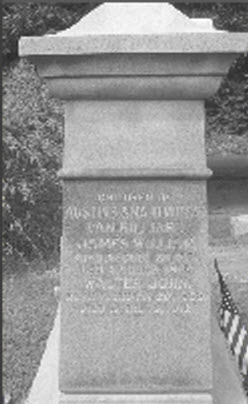
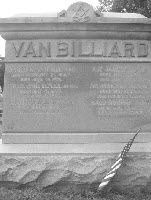
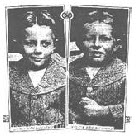
- Boy ghost named "Freddy”. According to Pastor Thompson, the children over the years had been talking about a little boy who would visit them while they were playing in the play room of the church. A ghost of a little boy wanting to play and apparently told them that his name was "Freddy”. Upon further investigation by the pastor, she found a gravemarker with the name of Frederick, a little boy who passed away when he was only 14 months old
- Whispers when no one else in room
- A man wandering the cemetary wearing a top hat and dresscoat
- Unexplained footprints in snow
DESCRIPTION / HISTORY
Designed by Robert Mills, it was one of his first efforts as an independent architect. This crowning achievement was open for business as the Burlington County Prison in 1811. Robert Mills, one of America 's first native-born, trained architects, came up with a well-thought out plan, which spared this prison what other prisons experienced; fire, destruction and loss of life because of it. The prison has interior vaulted ceilings of poured concrete, and with brick and stone walls, the prison was fire-proof, which gave it a long life, in constant use until 1965.
This solid building which was in use for 154 years had a basement, and two floors, originally built to handle 40 guests of the state. The warden's house eventually was located next door to the prison, connected by a tunnel.
Originally when the prison opened, the warden and his wife lived in two large rooms located on the main floor. The warden's wife was to supervise the women inmates, while the warden ran the ship as enforcer of the rules of the jail.
Throughout the prison, cell blocks were organized into units of 4 individual cells, each with its own fireplace, opening off a short hall at each end of the floor. Each cell block held people accused of the similar offense/ criminal type & sex. Women inmates, habitual criminals and first offenders were three of the categories, segregated in the housing plan.
Then, there were those imprisoned because of their debts, still being done in 1811. They were kept in the larger rooms off the main hallways, which could accommodate 3 or 4 men in each room. They were allowed to move about the place in daylight hours and be employed in the basement workshops, probably with the idea of working off their debt.
The Basement - Was designed to house a workshop, where the incarcerated, both men and women, were expected to learn a skill, so that when they had done their time, they had a way to be in lawful employment. The kitchen and all supplies used in prison life were in the basement. Another room in the basement was designed to be the dining room, and a controlled access to the exercise yard, which was surrounded by a twenty foot, imposing wall.
The dungeon or maximum security cell was not in the basement but was located in a room in the center of the second floor, surrounded with small areas for guards or visitors, with an iron ring in the center of the floor for the incarcerated person. It was the only room without a fireplace, but had a small window, located high up on the wall. It was a cold place to spend the night, often used for the last night before the condemned would die by hanging out in the yard.
Outside the main building in the yard there was a area where the inmates could tend a small garden and also a place where a set of leg stocks was located where all could see, for the punishment of uncooperative / rowdy ones, which is a more humane way to punish than what was used in other prisons. There was also a place in the yard for a portable gallows to be put up on the many occasions when people who were convicted of a capital crime were hung without exception, as authorized by law by the state of New Jersey. All persons who were convicted in Burlington County came here for the carrying out of their sentence. The last such execution was in 1906, a double hanging of the murderous duo, Rufus Johnson and George Small. I guess, after 1906, executions took place in another facility.
There were some escapes planned and executed, with a few successfully gaining their freedom, if only for a short time. In 1875, some enterprising souls made a hole in the roof from a cell and then climbed down a huge pile of wood stacked by the prison wall.
In 1965, the prison was bursting with 100 inmates so they were moved to a bigger location, an old converted armory located behind the prison. In 1983, a new bigger prison was built somewhere else, becoming the new place of incarceration.
The Prison now is a Historic Landmark and a nice museum, a fascinating place to learn about prison life. It still holds a few entities who don't want to leave. This became evident when in 1999 renovation work began on the run-down building, in order to create this museum for the public.
Paranormal Claims
Previous investigations of this old prison by other research groups have yielded a high amount of spiritual activity including positive photos and EVP's. Researchers have heard cell doors slamming shut on their own, and two researchers were physically pushed by unseen hands.
The Battlefield Bed and Breakfast is in a 200 year old field stone farmhouse that was a witness to the battle of Gettysburg. Cornelius Houtelin's 1809 Civil War farmhouse is located on 30 acres of the Gettysburg Battlefield. He was active in the emancipation movement and the Underground Railroad.
